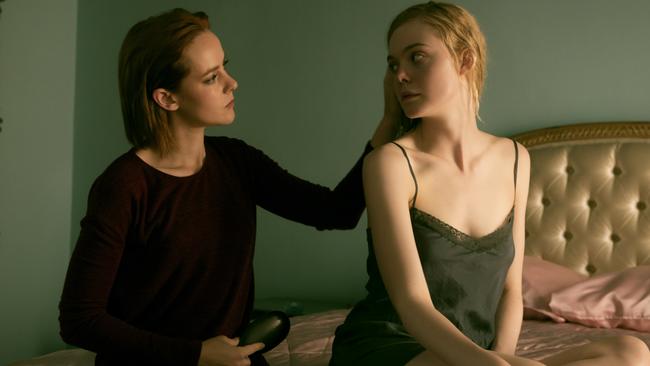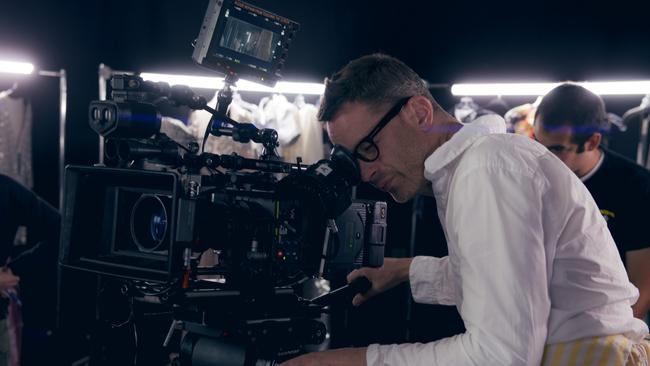The Neon Demon: beauty under the spotlight
Nicolas Winding Refn is not afraid to alter lives mid-shoot.

“If you ask me,” says Nicolas Winding Refn, “beauty is imperfection.” When the director talks about what beauty means to him, he’s not easy to pin down — but the question is at the centre of his new film, The Neon Demon, an artful, heightened combination of fairytale, melodrama and horror.
In The Neon Demon, a teenager called Jesse (Elle Fanning) has come to Los Angeles to seek modelling work. A worldly-wise agent (Christina Hendricks) signs her. A sought-after photographer takes some unusual test shots. Jesse’s presence, her youth, beauty and allure, causes angst among more experienced models, who recognise her as a threat. The film opens with a macabre fashion shoot that turns out to be relatively benign. Far greater horrors await Jesse.
When he met Fanning to talk about the work, Winding Refn says, “I told her, ‘listen, part of this movie is my own fantasy of what it would be like to be a beautiful 16-year-old girl and part of it is my own feelings and obsessions about beauty, both good and bad’. And she said, ‘That’s great, because I want to do a movie about beauty for my generation.’ So we very quickly saw what we could do.”
Winding Refn has plenty to say about his subject and its ramifications, but he’s not aiming to be definitive or even consistent. “I think that beauty is terribly complex, but I also think it’s very shallow. But I think it’s shallow because of its complexity. It’s an individual thing, it’s very much in the eye of the beholder.” It’s also a version of the class system, he says. And it can’t be acquired artificially. “We all know,” he says, “it’s a mission bound to fail.
“Yet we do live in a world in which the obsession with beauty has only gone up. I don’t know if we are more obsessed than ever, but we have abilities to drive our obsession in more extreme ways.”
He had close contact with this world a few years ago when he shot some commercials for luxury goods. For a Gucci scent called Premiere, he made an ad featuring a gold-clad, statuesque Blake Lively, a princess in a glass tower, gazing down over the Hollywood Hills, both prisoner and ruler. He also gave himself a fleeting cameo as a director, in a setting that has an odd echo of the final scene in The Neon Demon.
“The Gucci ad with Blake was like my first foray into high-end fashion. And I loved it, I loved it, I loved it, I loved it,” he says. “Working with her ... I mean, talk about beauty. I loved the whole aesthetic. The fantasy nature. All the sexualisation of it. That’s probably when I was saying to myself, ‘I want to make a movie that takes place in the world of fashion ...’
“But I didn’t want to make a movie about fashion, which is very different. I wanted to make a movie about beauty.”
Despite the hyper-aestheticised style of his recent films, it’s not a topic you would have associated with Winding Refn earlier in his career. In his native Denmark, he made his name in the late 1990s with the Pusher trilogy, bleak and brutal films set in the criminal underworld of Copenhagen that also launched Mads Mikkelsen. Winding Refn’s English-language debut was Bronson (2008), followed by two films with Ryan Gosling: the neo-noir Drive (2011), and the hallucinatory tale of revenge, Only God Forgives (2013), shot in Bangkok.

The making of The Neon Demon reflected the way Winding Refn likes to work. He shoots chronologically, and says that he’s always ready to consider changes as he goes along. He will invite ideas from cast and crew about the path the narrative might take, and how the film might end. “I think that you have to seek all options before you can really decide what feels right. I love that creative process, especially with the actors, of working out where their characters could go or not go.”
It’s not a democratic process, however, he makes it clear. “In the end I’m very, very egotistical when I work, so it’s an open forum, but everything has to lead back to what do I feel is right or wrong.”
He’s adamant, in this instance, about an option he took mid-shoot. “The biggest change I made in Neon Demon was that I decided not to kill Jena Malone.”
Malone (Donnie Darko, The Hunger Games) plays Ruby, a make-up artist who befriends Jesse. Models Gigi and Sarah, played by Australian actors Bella Heathcote and Abbey Lee, don’t exactly make Jesse feel welcome; only Ruby appears to have her best interests at heart. Yet she has her secrets and desires, her own agenda — and she doesn’t come to a sticky end early in the film, as was originally intended. “I didn’t know that until the first week,” Winding Refn says, “when I started shooting, and I saw the scenes between Elle and Jena were so good, I thought, I don’t want to kill her. There’s more to this character than I had ever imagined. So we have to keep her alive.”
Fanning’s character, the solitary, beautiful apparition, also underwent changes. “We made Jesse much darker. We found that was the route to take, it was so much more interesting, we didn’t want her to become a victim.”
Jesse, he says, “shares DNA” with characters in his other films, citing the silent warrior One-Eye in his Viking epic Valhalla Rising, the mysterious getaway driver in Drive and the avenging lieutenant in Only God Forgives. She’s an enigma whom other characters feed off and project things on to.
Fanning, he says, is an enigma too, as an actress. “She has so many facades she can tap into. She’s an enigma of possibilities, and all you need is to push and push in various directions.”
If beauty is important to Winding Refn, so too is neon, whose light illuminates so much of the film. He’s always loved it, he says. “For me it has a very science-fiction sensibility. It’s very analog but there’s also something very artificial about it and it makes you a little more beautiful.”
In a culture obsessed with beauty, “Hollywood is the wizard”, Winding Refn says. “Whatever you’re in, everything leads back to Hollywood. Hollywood beams beauty to the rest of the world.” The Neon Demon had to have “a Hollywood ending with a Hollywood Babylon sensibility”. For the concluding scenes in the film, Winding Refn’s team found a place that fitted the bill perfectly.
It was a mansion that once belonged to a silent movie actor, Antonio Moreno. He played one of Greta Garbo’s lovers in The Temptress (1926); he was also one of the stars of It, the 1927 Clara Bow vehicle that gave us the term “It Girl”. Winding Refn didn’t know of the connection at the time, but he’s happy to take it. “There are many parallels,” he says.
The Neon Demon opens nationally on October 20.



To join the conversation, please log in. Don't have an account? Register
Join the conversation, you are commenting as Logout